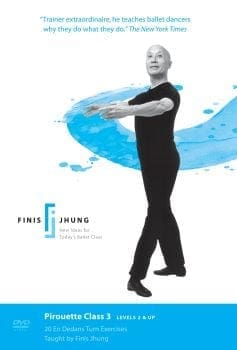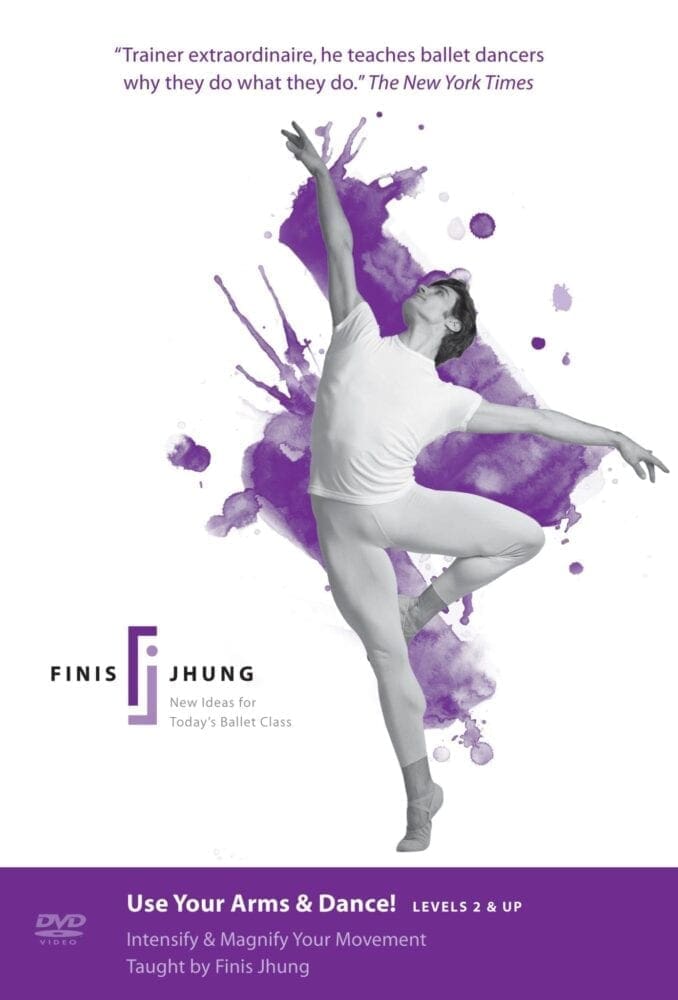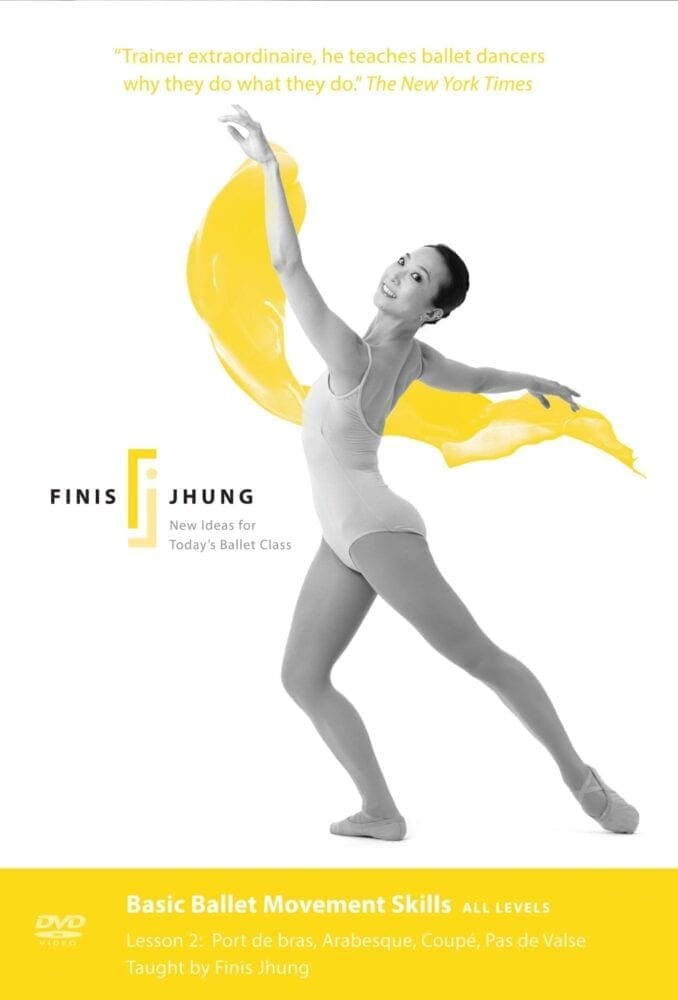Whether you pirouette en dehors (turning to the right on your left foot) or pirouette en dedans (turning to the right on your right foot) go ahead and use the right arm to initiate and complete the turn. When you turn to the right and fall to the right, it is because you are bringing your left side to the right. Divide your body in half: left side, right side. Learn to keep them apart—the left stays left, the right stays right. One side should lead the other. One side is more important than the other. First you do this, then you do that. For both turns to the right, first reach back and twist to the left, and leave it there. Then turn your right arm back and around to the completion. It doesn’t matter what leg you are on. As long as you turning to the right, lead with the right arm. And, vice-versa. And don’t forget to give the supporting knee a push past the toes and press the ball of your feet firmly to the floor. And, spot! Check out the video on inside turns: https://finisjhung.com/shop/pirouette-class-3/




